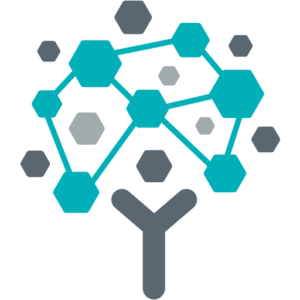Reading Time: 4 minutes
In 2023, 43% of nonprofits used seven or more technological tools daily, drastically limiting employee efficiency and costing organizations nearly $25,000 and over 400 work hours a year.
What could your team accomplish with an extra eight hours a week?
If your organization spends hours navigating financial data, struggles to generate accurate reports, or frequently uses multiple systems to handle routine tasks, it’s time to examine your technology.
We’ll explore common symptoms of technology bloat and discuss steps to optimize your nonprofit systems, increasing team efficiency and improving financial visibility into your organization.
Identify Your Nonprofit’s Needs
Eighty-four percent of nonprofit organizations say they must optimize processes to serve their mission better.
When it comes to evaluating your technology, consider these best practices:
1. Ask for and encourage candid feedback from your team
Too often, nonprofits stick with what’s working because it’s worked before. Ask your team what they like about your current technology, their pain points, what features could be added to make their jobs more manageable, and other similar questions.
2. Aggregate key takeaways from the feedback
After compiling all the feedback from your team, common themes will emerge and become more apparent.
3. Examine your technology’s purpose.
- Nonprofits frequently use multiple pieces of software with numerous repetitive functions. Features overlap and even repeat with varying degrees of effectiveness. Look for technology that embraces automation and improves data collection and evaluation.
- Using multiple pieces of siloed technology introduces more opportunities for human error and slows down the data aggregation process.
Some common pain points will emerge as you work with your team and evaluate your technology. What follows are some of the most common signs that it might be time to upgrade your technology.
Common Nonprofit Technology Pain Points
These are some of the most common pain points that contribute to technology bloat and limit nonprofit efficiency:
Limited Scalability:
- Nonprofits frequently deal with multiple and complex funding sources. Relying on workarounds to manage funding sources contributes to inefficiency and costs administrative time and salary.
- For example, if your nonprofit uses QuickBooks, it will likely have to rely on workarounds to account for the complexities of nonprofit accounting. As your organization grows, so will the demand for more workarounds to account for funding complexities.
Inadequate Reporting Features:
- These complex funds also require unique financial reports. Many accounting solutions offer only basic, pre-set reports that don’t cater to nonprofit needs.
- If your organization can’t drill down into figures to gain greater details, limited visual representation options, and doesn’t have real-time data availability, it decreases visibility into finances and limits administrative efficiency.
- Inadequate reporting may make your organization susceptible to violating regulatory compliance requirements, which have legal and financial repercussions.
Lacking Audit Support:
- The audit process highlights that nonprofits are good stewards of financial funds, effectively managing operations and providing accurate visibility into an organization’s finances.
- Most technology has little to no support for nonprofit audits. If your solution doesn’t feature a built-in audit trail, internal controls to limit access to funds, or read-only licenses to grant an auditor access to your finances, it’s time to upgrade to software that does.
These are part of the five most common reasons behind upgrading accounting software, discover the rest here.
What to Look for in Accounting Software
After evaluating your technology, it’s time to determine a go-forward plan. Here, you’ll decide what your next steps will be. Whether that means sunsetting inefficient systems or looking for new technology entirely, this process will take time, but the benefits are undeniable. Sunsetting dated systems saves costs related to technology upkeep and improves efficiency by eliminating siloed, single-purpose systems.
Features to look for in Nonprofit Accounting Software
Nonprofits need software created to meet their unique needs. MIP Fund Accounting is nonprofit accounting software. MIP is customized to meet the needs of nonprofit organizations, including:
Advanced Reporting Capabilities:
Generate detailed, customizable reports that provide deep insight into your financial health, helping you make informed decisions with confidence.
Scalability and Flexibility:
MIP scales with your needs, providing the flexibility to grow and adapt as your organization evolves.
Robust Security:
MIP keeps your organization secure through industry-leading security and multi-factor authentication and automatically backs up your organization’s financial information. It uses multiple offsite virtual servers, so if something happens to your information, whether natural disaster or human error, it can be restored quickly, and you can be up and running again.
Audit Compliance:
With a built-in audit trail and internal controls, MIP cuts down audit preparation time and has Executive View Licenses to share read-only access to your financial information with your auditor to simplify the process. See how Lowcountry Community Action Agency cut its audit preparation by 50%.
Unified Technology Ecosystem:
MIP integrates seamlessly with other essential tools and systems, reducing data entry errors and improving overall efficiency. With all your data in one platform, you reduce the risk of error during data transfers. You can easily incorporate financial data with HR, Payroll, Procurement, Fundraising, and other modules MIP offers.
Dedicated Support & Training:
MIP has comprehensive support and training infrastructure to assist your organization with migrating your current solution to MIP and promoting continuous professional development after.
If your organization is suffering from technology bloat, consider whether it’s time to optimize your technology and improve team efficiency. Explore our comprehensive guide for important considerations for moving to new software, helpful questions to ask, and more.
Share this post





